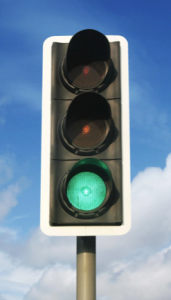
Cueing Up – The Watch(ing) Dog
Never underestimate how much your dog watches you. Dogs spend a lot of time studying humans as they try to predict what will happen next. However much we speech-orientated humans think that our dogs are listing to our verbal cues, the chances are that they are watching for visual cues. Of course there are also lots of cues in the environment – not least olfactory cues – that are not under our control and often which dogs need to learn to ignore.
Sometimes we cue the dog unintentionally, and this week I had an excellent illustration from Travis of this in action. Dogs that work livestock, especially collie-types, are particularly tuned to visual cues. Border collies control stock using a behaviour known as the “collie eye“(not to be confused with collie eye anomaly which is a heritable disease). It is this that can cause dogs suffering from separation disorder to start becoming distressed long before their owners are due to go out as they learn the string of cues that predict being left alone.
It is an exaggerated version of the initial hunting behaviours of seeing prey and stalking it. Australian shepherds, in contrast, control stock much more using body blocking. However, like their cousins the collies, they are fast, quick-witted and very observant.
So I should have known better when Travis surprised me by his behaviour. I shut my laptop in preparation to go shopping and Travis popped into his crate voluntarily. After a second or two, I remembered that had been a cue for my last dog too.
It is important to remember this and to learn how to test your cues so that you really understand what your dog is interpreting as the green light – it will probably surprise you.
Next week: Finding The Off Button
If you need help with making your cues reliable, book a Rock Solid Rover Course or book an Activities Course to try your hand at herding, showing, treibball etc.

